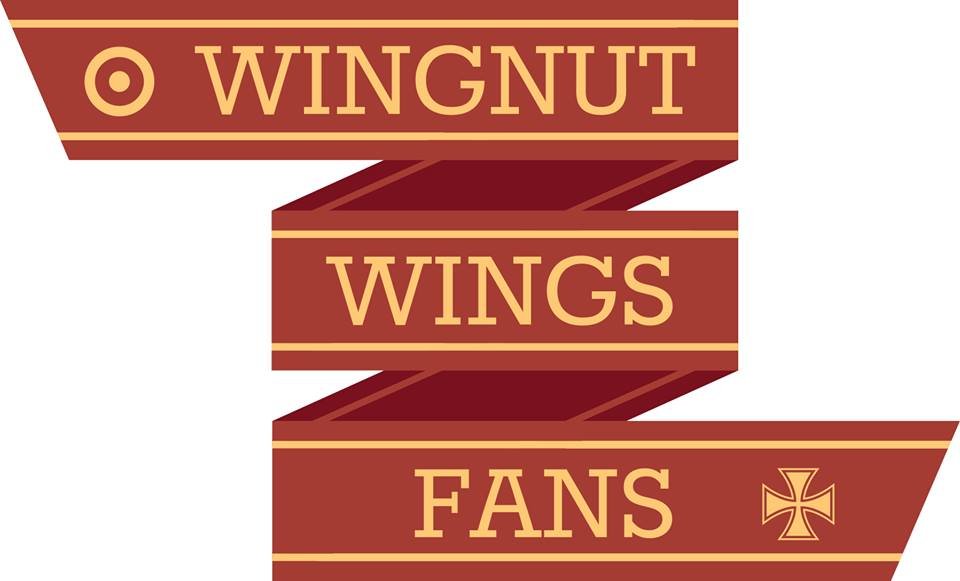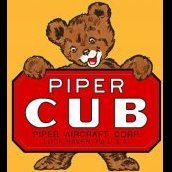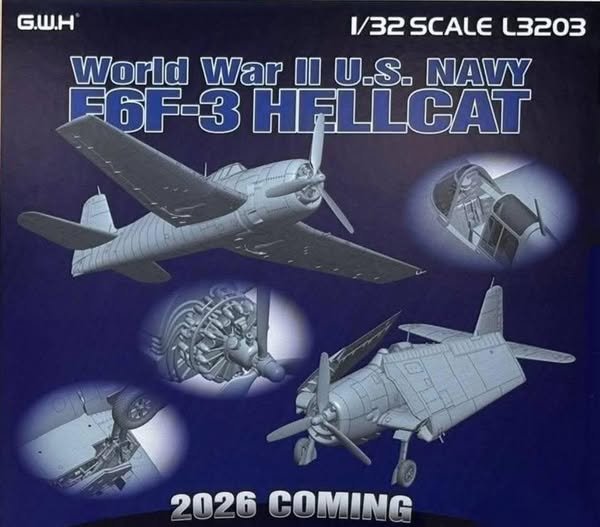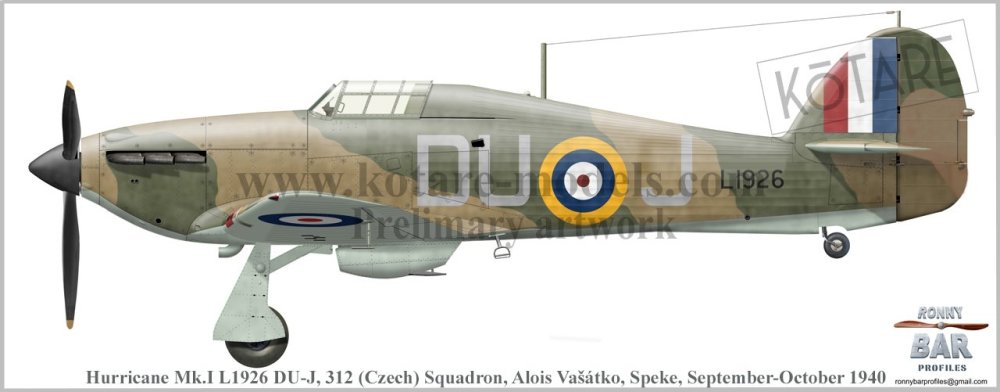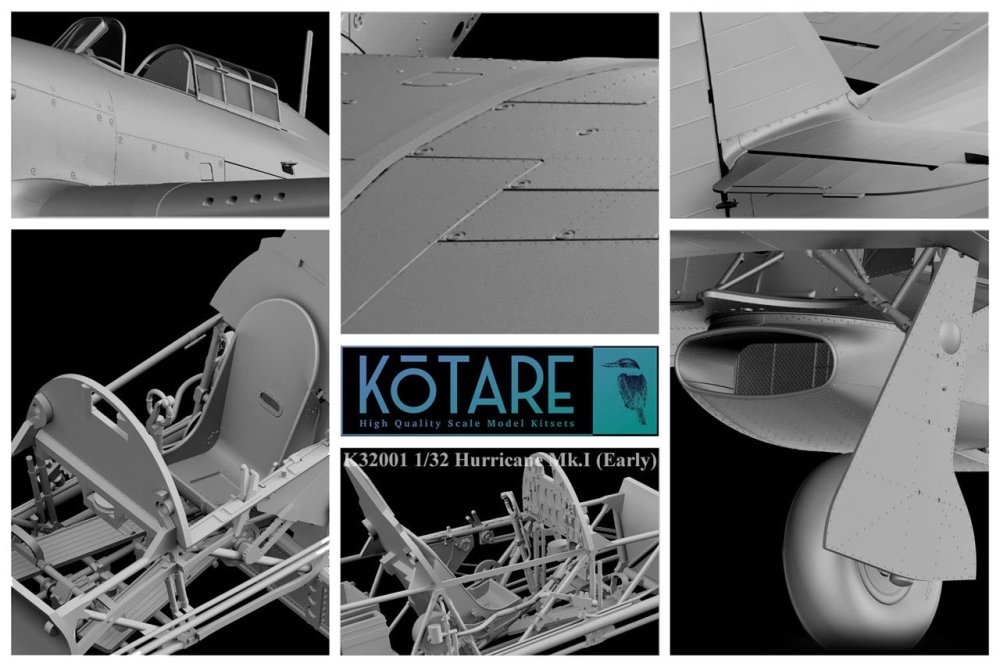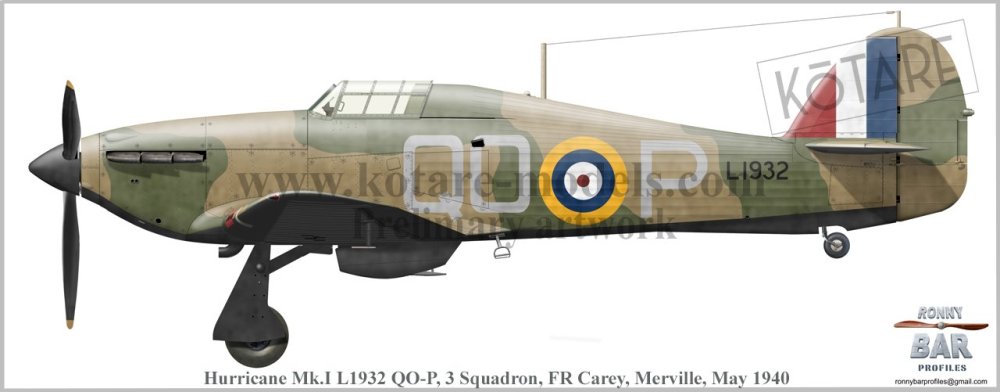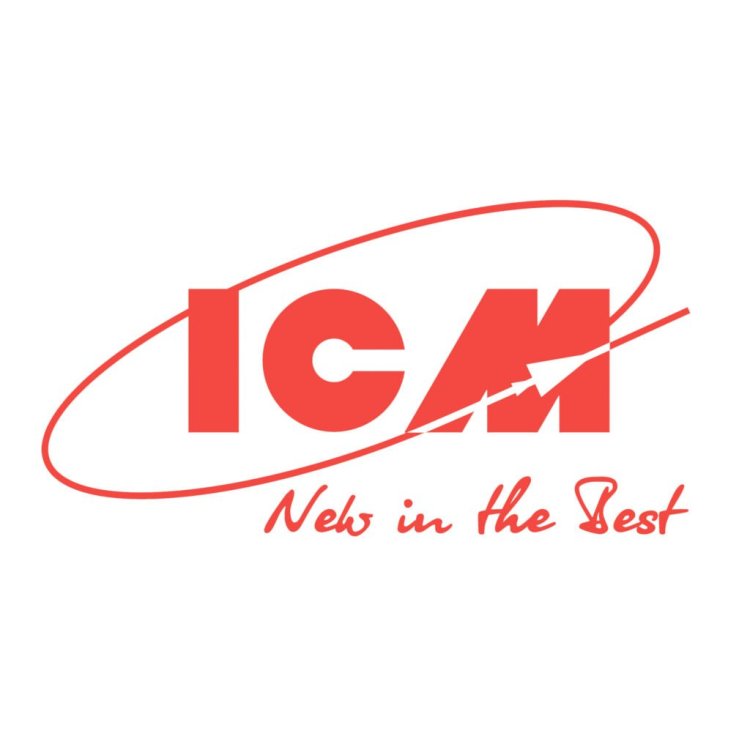-
Posts
2,261 -
Joined
-
Last visited
-
1:32 Henschel Hs 123 A-1 ICM Catalogue number 32016 Price: around 50,80€ When I saw that ICM was preparing the 1:32 Henschel Hs 123 I sent ICM an email asking with they could do or if they were thinking of doing a determined scheme… They thanked the suggestion and the information I gave them about it and then radio silence… After on the ICM catalogue for 2025, I did saw the Hs 123 and hoping to have the scheme I wanted… They release then, and nothing… So I thought to myself, well maybe one day, I will getsome after markets decals for it… Until, one day, ICM just release with a “fantasbulastic” box art! I first saw this scheme in Luftwaffe im Focus n.º 14 ( (publisher LuftFahrtverlag Start). It has some great pictures of the real aircraft and a profile made by Ronnie Bar. This “wild” camouflaged Hs 123 were taken in the summer of 1938, being an aircraft of 3./Fliegergruppe 50 (renamed in 1st November of 1938 as III./St.G. 163. In 1939, 1st May, was renamed again as III.Gruppe Sturzkampfgeschwader 2 “Immelmann” This aircraft is the one of Lt. Siefried Hamann. In the summer of 1938, he was Adjutant to the Staffel commander of 3./Fliegergruppe 50. Hamann, at that time, was not a yet pilot but he learned to fly, secretly, in his spare times. At that summer, he informed his Staffel commander Oblt. Heinrich Brüker that he has learned to fly. Later that summer, he got permission to show what he could do. So, a Hs123 was selected and the ground personnel overpainted the Hs. 123 markings and prepared it for the occasion. The aircraft is cover with sayings According: The right side of the tail – “God save our Adjutant” On the right fuselage: “The Last close-support flyer?” Left side sufelage: “All beginnings are difficult, Lt Hamann BE CAREFUL” Left side of the tail: “Little Fish, Kurt” Hamann in 1939 was a pilot in III./St.G2 and took part in the attack on Poland. He was still in the Gruppe in that attack in the west. In May 1940, when he was KIA when his Stuka got a direct flak hit. This set is a the early verson that we already reviewd and you can see here. So this version is quite special for me, and I was wondering how mask do I would have to use to make this one? And I was quite surprised when I saw the two large decals sheets. The decals, as usual are very good in color saturation, solid color, quite thin and perfect registration. But the have all the “markings” to make this plane on the box art plus two more schemes. The only “masking” or more complicated zone would be the “drop white” on the engine cowling that the center is painted in white and the decals will surround it. All the rest of the decals should quite straightforward but be careful in all the process. There`s still two schemes extra from the decal sheet. Hs 123A , pre-production aircraft, 1936; Hs 123 A-1 3./St.G 165 “Immelmann”, 1937 A masking template of the windshield is given. In this model, is a minor job and not hard to do. The instructions. The usual standard from ICM with a booklet with the first and last page in satin paper and the rest in normal paper. Anyway, the instruction manual is detailed and easy to follow. It includes step-by-step assembly diagrams, color callouts, and decal placement guides. Conclusion This is on my bench, cutting already the parts already. This particularly scheme Hs 123 in 1:32 I was one of the most wanted ones from me so I`m very pleased that ICM have release it, but on top of all, ICM releases it with a fantastic detail and a full decal sheet with all the markings and strips!! Molding quality is top-tier: No flash, sink marks, or ejector pin scars in visible areas. Panel lines are fine and recessed, with subtle fabric tape effects on control surfaces. Just perfect! VERY Highly recommend this to intermediate/expert modeler My thanks to ICM for making this fantastic model.
- 1 reply
-
- 2
-

-

-
Fran started following After all, HpH is alive!!!!
-
Just saw this on facebbok (LSP) "Hi, HpH Models is still alive. We’ve only changed our approach to production and distribution. The model market has seen a significant decline; we are mainly model builders ourselves, and we do everything out of enthusiasm and love for our hobby. But the hobby must not become too expensive. In other words, production has to at least pay for itself. No one is going to subsidize a company long-term. Some models are available through: https://www.mn-modelar.cz/plastic-models?creator[]=911&=1,1&pg=1. Models that have the main parts such as fuselage, wings, etc. made from fiberglass (B-52, BV, Concorde, etc.) can be ordered directly from me. However, there is a waiting list and a longer delivery time. My email is mirek@eebc.art or mirek@namitech.com. Hopefully this will make someone happy. Regards Mirek" So happy orders everyone! Fran
- 1 reply
-
- 6
-

-

-

1:32 ICM - Battle of Malta (Sea Gladiator and CR. 42 Falco).
Fran posted a topic in Aircraft Reviews
1:32 Battle of Malta ICM Catalogue n.º DS3201 € 68,95– in ModelBau The Siege of Malta The siege of Malta (or battle of Malta)[10] in World War II was a military campaign in the Mediterranean theatre. From June 1940 to November 1942, the fight for the control of the strategically important island of the British Crown Colony of Malta pitted the air and naval forces of the Kingdom of Italy and Nazi Germany against the Royal Air Force (RAF) and the Royal Navy. The opening of a new front in North Africa in June 1940 increased Malta's already considerable value. British air and sea forces based on the island could attack Axis ships transporting supplies and reinforcements from Europe. General Erwin Rommel, de facto field commander of Panzerarmee Afrika in North Africa, recognised its importance quickly. In May 1941, he warned that "Without Malta the Axis will end by losing control of North Africa".[1] The Axis resolved to bomb or starve Malta into submission, to soften it up for invasion, by attacking its ports, towns, cities, and Allied shipping supplying the island. Malta was one of the most intensively bombed areas during the war. The German Luftwaffe and Italian Regia Aeronautica flew a total of 3,000 bombing raids over two years, dropping 6,700 tons of bombs on the Grand Harbour area alone.[11] Their success would have allowed a combined German–Italian amphibious landing (Operation Herkules) supported by German airborne forces (Fallschirmjäger) but this did not happen. Allied convoys were able to supply and reinforce Malta, while the RAF defended its airspace, though at great cost in materiel and lives. In turn, aircraft and submarines based in Malta were able to successfully interdict convoys bound for North Africa, depriving Axis troops of supplies. In November 1942 the Axis lost the Second Battle of El Alamein and the Allies landed forces in Morocco and Algeria in Operation Torch. The Axis diverted forces to the Tunisia campaign and reduced attacks on Malta, ending the siege.[1] In December 1942, air and sea forces operating from Malta went over to the offensive. By May 1943, they had sunk 230 Axis ships in 164 days, the highest Allied sinking rate of the war.[12] The Allied victory in Malta played a major role in the eventual Allied success in North Africa. History from Wikipedia. For more information, see – https://www.bbc.co.uk/history/ww2peopleswar/timeline/factfiles/nonflash/a1144946.shtml https://www.rafbf.org/malta/about-siege https://warfarehistorynetwork.com/article/the-siege-of-malta-holding-on-to-the-island-fortress/ ICM in the past release two brand new mold Gladiator and Falco and this time, just putting them together and give the name of “Battle of Malta” to this box! The box art is vibrant and evocative, depicting a dogfight over the Mediterranean with the Gladiator diving on the Fiat. As for the packing is the traditional one from ICM with a sturdy flip-top box to protect all the parts. Always a great option from ICM The sprues for each model are packaged in their own re-sealable plastic bags, which also contains a clear sprue inside its own plastic bag. So both models are perfectly separated. The molding is ICM current standards, very good one with crispy surface details and no flash whatsoever on the gray plastic. The surface detail and panels lines are very very good indeed. Starting of the cockpit of both aircrafts, they are both quite good straight from the box… but there`s a lot of room for AM or scrathbuilding. Another thing is the lack of seatbelts… specially in 1:32 and open cockpit like the CR.42, that miss is quite notice and it`s a shame not having it on the box. As I said before, is the biggest default I point to the ICM model kis. Both aircraft have the tail structures both horizontal and vertical with separate flight control surfaces, and so can be set as the modeler desires. Also both wings have very good surface detail, with the ribbed detail being visible but only enough. Being both biplanes, one thins that is quite important to help out the modeler is the locations for the wing support struts and on both aircraft they are quite well made. As for the CR 42 Falco engine, ICM gives two assembly options, but I don’t really understand why and their non explanation on the instructions of it but I presume that is for the exhaust options. As for the Sea Gladiator, the variation is also with the intake filter, with two options given. Please check your references. Anyway, the detail is quite good on both engines, but their room for extra detail for the scratchbuilder/AM folks or simply to add some wires. The main undercarriage legs of the Falco are provided in two versions, with and without flared cowlings around the wheels and have no brake lines present. This set gives the original release with the option given back them with the correspondent decal sheet: - CR. 42 Falco, 83rd Squadron, 18 Gruppo, 56th Stormo CT, Ursel, Belgium, November 1942 - CR. 42 Falco,75th Squadron, 23 Gruppo Autonomo CT, Sicily, June 1941 The Sea Gladiator was a new sprue as it is the Mk.II. So the new sprue is the sprue F that provides mainly the three-bladed prop, instrument panels and a wing strut. But the different do not end here. There’s also the sprue G with parts for the hook, underfuselage hook recess and the belly fairing for the dinghy. As for the clear parts, the spure E gives alternative windshields, separate sliding portion, rear section and various lights. The decal sheet is the one of the original release, with good coloration. This release have the same scheme options as the original one (32042) Gloster Sea Gladiator Mk. II 804 Sqn., RNAS Hatston, Orkney Island, October 1940 Gloster Sea Gladiator Mk.II , 804 Sqn., HMS Furious, May 1940 Gloster Sea Gladiator Mk.II, 813 Sqn., HMS Eagle, Summer 1940 Gloster Sea Gladiator Mk. II, Hal Far, Malta 1940 And there`s a lot of aftermarkets decals for this model kit so you got a lot of choice if you want. Anyways ICM gives a single decal sheet indicator of the two Battle of Malta options. As for the instructions you get both booklet for both original kits with 20 pages each. I do like the touch of glossy paper but for workbench (to take notes, to risk parts) I prefer the normal mate paper. The drawings are quite easy to understand and very comprehensive, so it will be easy to follow even to the novice modeler. Being biplanes, and to have a biplane with “soul” (in my opinion at least) you have to have the rigging. And ICM provides several drawings diagrams in the instruction sheet as a guide. But also the rigging is given in two variations, with no explanation to wish one is wish. Once again you have to check your references. At last, as usual and a very good bonus, is the template guide for making a set of canopy masks. Conclusion: What a combo! You get two full original release from the Gloster Sea Gladiator and the CR. 42 Falco in a single box and cheaper that buying separately. Theses two model are great addition to any collection and you can get a really nice model straight from the box with the well-known high current ICM quality, even without any extra parts (resin or PE) So, just go and get one and built it! You will enjoy. My sincere thanks to ICM. -
1:48 Boston Mk. III ASK Keep the week with Art Sclae. Today we are going to check the new 1:48 Boston Mk. III decals for the Hong Kong Model Boston. The HK Model gives two options schemes, so these sheets are most welcome to make a different Boston. They release two decals sheets with several options each one and we have both of them. All sets came in a ziplog bag, small A5 size sheet with profiles colors instructions steps how to apply ASK decals. So let’s looks to the option schemes that all decal sheets offer. These sheets have a detail that I loved about. In the applying instructions, in all sheets, there`s a real photo of one of the airplanes that are represented on the decal sheets. I really love that "bonus". So let’s start. Boston Mk. III Workhorses in the sky Part I Catalogue number 200-D48079 Price: €12,29 To order, click here. -Boston Mk.III, flown by Squadron Leader Charles Learmonth. -Boston Mk.III, 24th Squadron, SAAF, April 1943. -Boston Mk.III, 418th Squadron, winter 1942/43. -Boston Mk.III, Tunisia 1943. The bonus picture with the Boston Mk.III (scheme n.º 2) The decals itself: Now the part II. Boston Mk. III Workhorses in the sky Part II Catalogue number200-D48080 Price: 12,29€ To order, click here. On this set, also 4 schemes options are present. - Boston Mk.IIIA, 88th Squadron, Hartford Bridge, Operation Starkey, August/September 1943. - Boston Mk.III, 418th Squadron, Summer 1942. - Boston Mk.III, 88th Squadron, Sqn ldr G.R. Pushman, July 1944. - Boston Mk.III, 88th Squadron, Operation Oyster, December 1942. The bonus picture on this set is from the Boston Mk. III from Operation Oyster, December 1942. These sheets only have decals for the markings, as no stencils is given. ** Analyzing the decal sheets, the color registration is great and a very good definition of the details. The decals have a thin film, in fact looking very thin and delicate. I already tried them and it work great, with good adhesion to the plane surface without wrinkling or bubbling. No adverse reaction to Micro set or Micro Sol. You do have to work then with care and patience as they are very delicate and therefore, fragile. The printing quality is quite good, as they are sharp, with outline very well defined. The color look quite good and spot on. The instructions are the general ones that are applicable to all decals, it is always important to remember the general principles of decal application. In this case, there is no specific rule for applying these decals. The profiles draws contains lots of information, with side view (both side) and top view with precise decal indication. Conclusion: ASK is continuous to give us a lot of schemes options that are more than welcome! The location indication of the decals is quite good and very perceptible. The decals as already said, have a very good colour registration, very thin, with minimum decal film, and they work quite nice! My thanks to Art Scale Decals for producing these fantastic decals and the possibility of reviewed them. Francisco Guedes .
-
1:32 Me-109 K-4 ASK Back to the Art Scale decals! Today we are going to check the new 1:32 Me-109 K-4 decals for the Kotare Me-109 K-4. The kotare model gives three options schemes, but if want something different ASK is the place to look! They release four decals sheets with several options each one. And we are going here to review the Me-109 K-4 Part 1 and the Me-109 Part II. All sets came in a ziplog bag, small A5 size sheet with profiles colors instructions steps how to apply ASK decals. So let’s looks to the option schemes that all decal sheets offer. These sheets have a detail that I loved about. In the applying instructions, in all sheets, there`s a real photo of one of the airplanes that are represented on the decal sheets. I really love that "bonus". This time the photo bonus is for the Messerschmitt Bf 109K-4/R3, W.Nr. 332884, "White 8 - Gabi" 9./JG 3, Pasewalk-Franzfelde, April 1945 Messerschmitt Bf- 109 K-4 - part 1 – Swan Song of the Messerchmitts Catalogue number 200-D32094 Price: €12,29 To order, click here. - Messerschmitt Bf 109K-4, 3./JG52, Salzburg-Maxglan, Austria spring/summer 1945. As you can see, you are given the option of making with the american start of the original luftwaffe marking. - Messerschmitt Bf 109K-4/R3, W.Nr. 332884, "White 8 - Gabi" 9./JG 3, Pasewalk-Franzfelde, April 1945. - Messerschmitt Bf 109K-4/R3, W.Nr.333878, ANR, Lt. Gallori, 3a Sqd., 1° Gruppo Caccia, Lonate Pozzolo, March 1945.. The bonus picture: The decal sheet: Very nice coloration. Now the part II. Messerschmitt Bf- 109 K-4 - part 2 – Swan Song of the Messerchmitts Catalogue number200-D32095 Price: 12,29€ To order, click here. On this set, also three schemes options are present. - Messerschmitt Bf 109K-4, 9th/JG3, Pasewalk, March 1945. - Messerschmitt Bf 109K-4, 9th/JG 53, Lechfeld, May 1945. - Messerschmitt Bf 109K-4, I./NJG 11, Leck, May 1945 The bonus picture on this set is from the Messerschmitt Bf 109K-4, 9th/JG 53, Lechfeld, May 1945. These sheets only have decals for the markings, as no stencils is given. ** Analyzing the decal sheets, the color registration is great and a very good definition of the details. The decals have a thin film, in fact looking very thin and delicate. I already tried them and it work great, with good adhesion to the plane surface without wrinkling or bubbling. No adverse reaction to Micro set or Micro Sol. You do have to work then with care and patience as they are very delicate and therefore, fragile. The printing quality is quite good, as they are sharp, with outline very well defined. The color look quite good and spot on. The instructions are the general ones that are applicable to all decals, it is always important to remember the general principles of decal application. In this case, there is no specific rule for applying these decals. The profiles draws contains lots of information, with side view (both side) and top view with precise decal indication. Conclusion: ASK is continuous to give us a lot of schemes options that are more than welcome! The location indication of the decals is quite good and very perceptible. The decals as already said, have a very good colour registration, very thin, with minimum decal film, and they work quite nice! My thanks to Art Scale Decals for producing these fantastic decals and the possibility of reviewed them. Francisco Guedes
-
Well, I know that we are still in 2025... but there`s already some news for 2026... The first one is GWH F6F-3 Hellcat!
- 17 replies
-
- 10
-

-
-
wow!! great deal for those that are in that side of the pond!!!
- 1 reply
-
- 1
-

-

1/35 scale engine house with workshop
Fran replied to CP1's topic in LSM 1/35 and Larger Work In Progress
Nice paintob on that walls! -

Tamiya Malta Spitfire VB RFI
Fran replied to JohnB's topic in LSM 1/48 Aircraft Ready for Inspection
👍 Good work! -

1/35 scale engine house with workshop
Fran replied to CP1's topic in LSM 1/35 and Larger Work In Progress
Now thats a very good looking diorama project!! Looking forward to see the next steps! -
Wow!! Very nice work! thanks for sharing!
-

506th FG P-51 Iwo Jima completed
Fran replied to JohnB's topic in LSM 1/32 and Larger Aircraft Ready for Inspection
Nice looking Mustang JohnB! I only see one photo but I like what I see! -
1:48 Do-217 M-1 ICM Catalogue number 48274 Price: around 64,95€ The Dornier 217 M-1 was a German WWII era medium bomber, developed from the previous Do 217 E medium bomber series. Unlike the previous Do 217 E, and similar to the Do 217 K-1, the Do 217 M-1 nose and cockpit was redesigned and aerodynamically streamlined, resulting in lower drag and higher speed. The crew of five was sitting inside the new fully glazed canopy. Unlike all the Do 217 versions before, new engines were chosen as the radial BMW 801 engines were in shortage. Instead,the Do 217 M used inline DB 603A engines found in He 219 and Do 335 or Italian G.56 fighters. New engines drastically improved the top speed of the bomber which increased by approximately 80 km/h. The defensive armament was changed again, the forward 7,92 mm MG 81 was replaced by heavier 13 mm MG 131 and the rear facing MG 81 machine guns were changed from single to dual mounted. The offensive armament was removed. Maximum bombload of 4000 kg of bombs either in bomb bay or on external racks under the wings remained unchanged, although a single SC 1800 bomb could now be carried inside the bomb bay. The Do 217M took part in Operation Steinbock, the last Luftwaffe offensive against British isles aswell as in sinking of the battleship Roma on her way to Malta. The Do 217 M-1 was introduced in Update 1.29 together with the other planes of the Dornier 217 family. The Do 217 is faster than most of other bombers it will meet in battle, being capable of taking out up to four bombing points when utilizing the Flamm C250 incendiary bombs or up to four bases utilizing the four SC 1000 bombs, depending on the maximal battle rating of the said match. Do 217 M is also very capable CAS due to its heavy bomb load and the powerful SC 1800 bomb containing 1000 kg of TNT eq. and 30 metres wide destruction radius. Do 217 can also be used in naval battles as it comes equipped with a pair of F5W torpedoes with 3 km range and 300 kg TNT eq. However these might prove hard to use as the Dornier have to slow down to sub 301 km/h making it an easy target for the naval gunners. Despite being a bomber, the Dornier is also quite maneuverable with maximal structural limit being 700 km/h, rivaling fighters such as Bf 109, making the Dornier be able to run away in dive from opponents such as Spitfires or Yaks. (https://wiki.warthunder.com/unit/do_217m_1) So the main difference and it quite eaassy to see are the engines. While the Do-217 K-1 was powered by the BMW 801 engine, the M-1 was powered by the Daimler-Benz 603. So this kit has all parts of the K-1 version except the engine sprue. But first the box art! ICM really has some great artist painting or making such box art. This one is no exception as it´s, for me, very appealing! On his version you will get much less plastic as you don’t have the engine BMW sprue. On the K version you have a Daimler benz engine and the BMW engines. In this version, only the DB engines. The clear parts are perfect! Even in this shape… As usual are pristine and very clear with no distortion at all. This example has a little cloudy window in the from gondola but nothing that a bit of polishing would not solve. The cockpit is quite big and there’s a lot of glazing to see inside. So, straight from the box, you can get a good cockpit detail has you have in the box side consoles, small instrument panel with three-dimensional components. So, with some work, the decals and some carefully painting you can get a great cockpit straight from the box, excepted for the seatbelts. As usually, for the seatbelts you need to use some aftermarket seatbelts. Passing on a first general view, is a typical ICM quality plastic, with no distortion, no flash, with very good surface detail. The main different for the K version- The engines You can chance to chose between close engine and open engine. To open the engine, a minor surgery has to be made so you have to cut the gondola engines and start working on step 48A. If you want all close you start the 48b. The good of it is that you can have one close and one open. The instructions. The usual standard from ICM with a booklet with the first and last page in satin paper and the rest in normal paper. The color table chart only have ICM paint range and it start to make some sense (at least in Europe) as you start to have some online store that sell them as Art Scale Kit. Anyway, the instruction manual is detailed and easy to follow. It includes step-by-step assembly diagrams, color callouts, and decal placement guides. The masking templates is a nice touch but I would recommend some good masks like the ones from Art Scale. The decal sheet has a good color registration and supply 4 finishing options: Do-217 M-1, 2./KG2, France, Summer 1943 Do-217 M-1, 2./KG2, Culimiern, early 1944 Do-217 M-1, 1.(f)/Nacht, Kastrup, Spring 1945 Do-217 M-1, 2.(f)/Nacht, Prague-Ruzyne, 1945 The box profiles. Conclusion Well, ICM is filling up all D-217 variants in 1:48, all with very good models kits straight from the box. The M and K line were a must have to all Luftwaffe fans. The wait as worth it, no doubt about it!! As all latest ICM model kits, the detail out of the box is very good and it will make a very good replica. For the expert and keen modeler some AM will make some extra detail to make this beauty into a total masterpiece. That big clear gondola is begging for it. VERY Highly recommend this to intermediate modeler My thanks to ICM for making this fantastic model.
-
1:32 Henschel Hs 123 Legion Condor ICM Catalogue number 32016 Price: around 53,99€ The Henschel Hs 123 was a rugged German biplane dive bomber and close air support aircraft developed in the early 1930s, entering Luftwaffe service in 1936. Despite its dated biplane design, it excelled in maneuverability, short-field operations, and survivability during low-level attacks, seeing combat in the Spanish Civil War (as the "Legion Condor" variant), the one that we are reviewing here, the invasions of Poland and France, and extensively on the Eastern Front until 1944. Production ended in 1938 after about 1,100 units, but its simplicity kept it relevant. ICM release now the early version, that was present in the Legion Condor. We, at Large Scale Modeller, already reviewed the Late version here. Both share identical sprues (about 200 parts in medium grey styrene, plus clear parts), differing only in decals, instructions, and minor optional parts for historical accuracy, as the headrest. The kit arrived in ICM's sturdy, lift-off-top box with attractive artwork, please Revell, do it as well. Inside the box, eight grey sprues (A–G, with F duplicated for undercarriage/bombs), one clear sprue, a single decal sheet, and a 20-page A4 instruction booklet. The plastic is in gray color, a bit soft on touch, So, on the sprue A we got fuselage halves with excellent panel line detail, no rivets, upper front decking, external fuel tank. Sprue B and C, the Upper and lower wings with one-piece lower wing with flaps and separate ailerons/elevators for posing. The wings also have some really nice surface detail. Now the sprue D brings control surfaces, optional early/late hinge mounts, with the subtle internal structure details. As for the Engine, everything is in the sprue E and also for the cockpit. You got the BMW 132K radial engine (detailed cylinders, separate exhaust stacks, valve covers, and triform cowling braces) and tailplane. The engine cowling is supplied in nine parts. I personally don’t appreciated so many parts on the cowling but it`s probably the only way to open it to display the engine. Here you also find the headrest used on the late version. Concerning the cockpit, two instrument panels are included with raised detail to simulate instrument placement. You can choose if you want to paint or decal. The OOB cockpit detail is quite good as all ICM release with a minus, the seatbelts. There are none on the box and the seat don’t have them engraved. The sprue F comes in duplicated as it bring us the undercarriage legs, wheel spats and bombs. As for the G sprue, the final parts are the struts (as this is a biplane) for the cabane and interplane. These structs are quite thin and well-ejected. Here we also find some smaller detail like a flare gun, engiens exhauts, cockpy stic, elevatores etc. The decals, as usual are very good in color saturation, solid color, quite thin and perfect registration. All three options, all in pre-war RLM 61/62/63 splinter over 65: 1. Hs 123A "24 3" VJ/88, Spain, 1937 2. Hs 123A "24 4" VJ/88, Spain, 1937 3. Hs 123A "24 5" VJ/88, Spain, 1937 The Clear parts As usual are pristine and very clear with no distortion at all. Also in this clear part, of course, the wingtip nav lights. A masking template of the windshield is given. In this model, is a minor job and not hard to do. The instructions. The usual standard from ICM with a booklet with the first and last page in satin paper and the rest in normal paper. It has 70 building steps with exploded views, color call-outs (ICM paints only). Its quite clear and easy to follow. A side note for the engine assembly and those eight cowling parts, as take your time with dry fit and alignment of all parts. The color table chart only have ICM paint range so you can get the full range at Art Scale Kit Anyway, the instruction manual is detailed and easy to follow. It includes step-by-step assembly diagrams, color callouts, and decal placement guides. Conclusion ICM's 1:32 Henschel Hs 123 is a beautiful model kit, with very good detail out of the box. I really love the painting of the Legion Condor. So, if you like Legion Condor, 1:32 scale and biplanes you must get one of this beauties VERY Highly recommend this to intermediate modeler My thanks to ICM for making this fantastic model.

